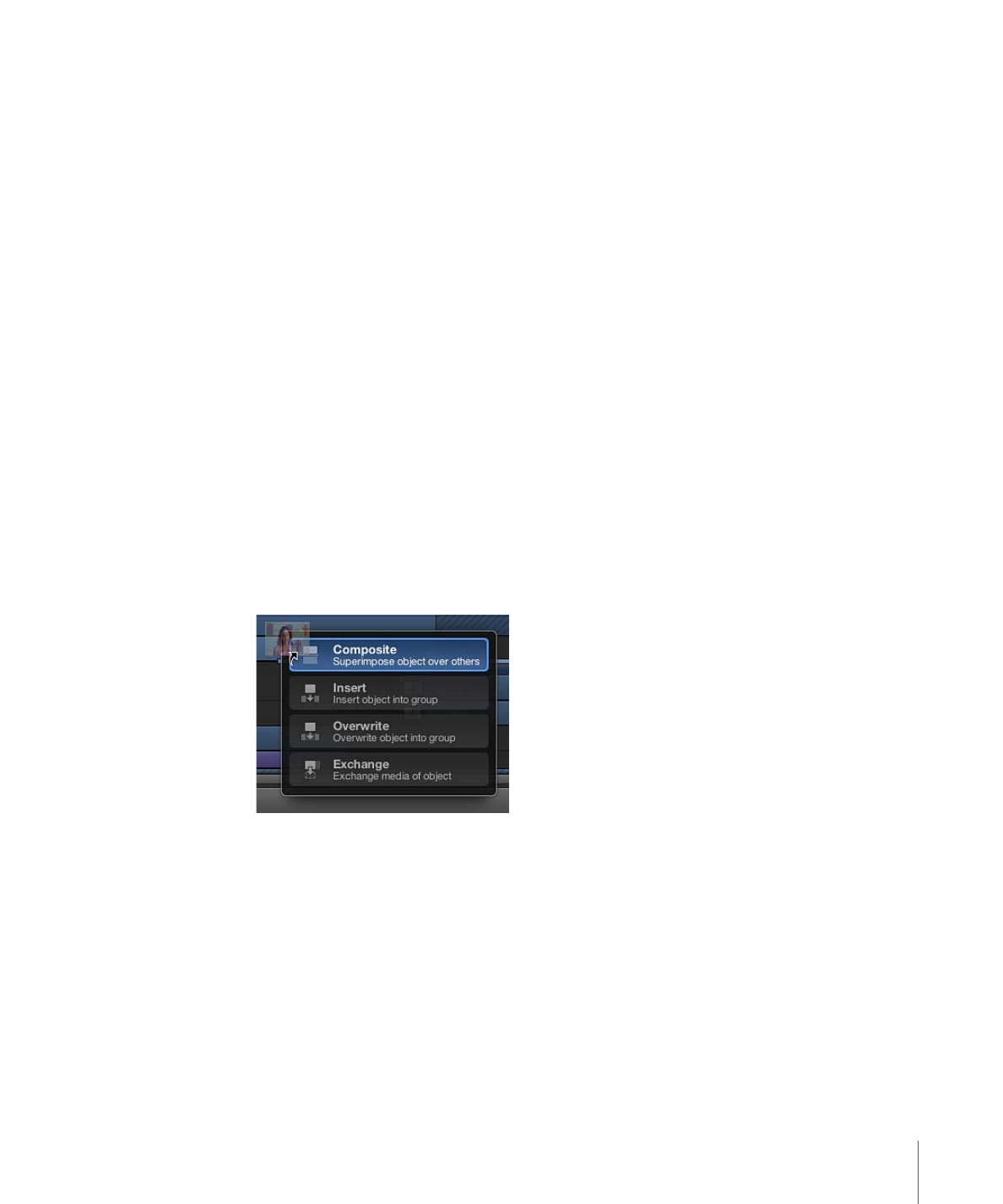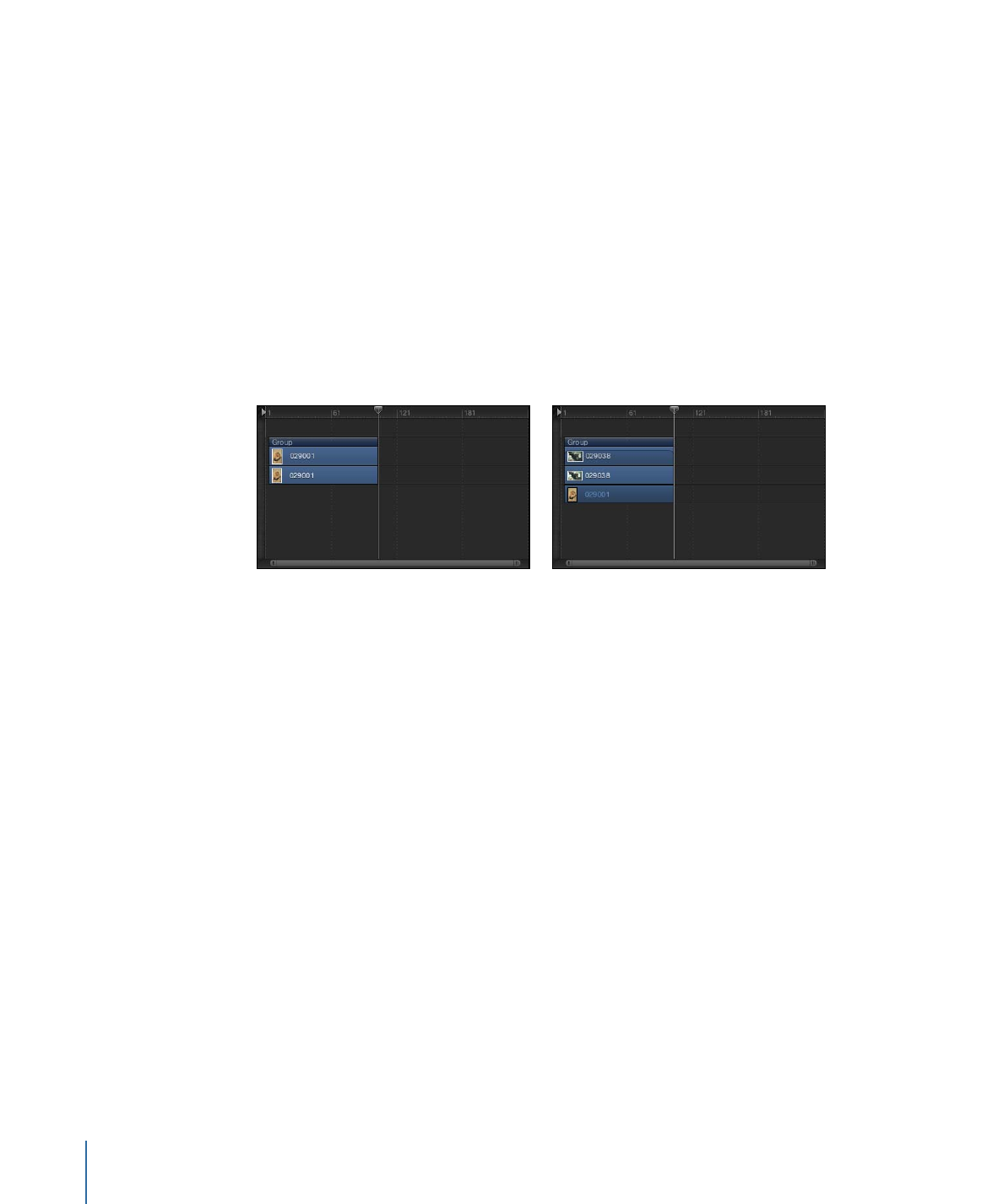
Adding Layers to the Track Area
When you drag a new media item into the track area, a drop menu appears with options
for how the new layer should be incorporated. Depending on where in the track area
you drop the item, the menu displays different options. If you drag to a group or layer
track in the track area, you can choose Composite, Insert, or Overwrite. An additional
Exchange option becomes available when you exchange the same type of media (such
as a QuickTime movie, an image sequence, or an image file). For example, the Exchange
menu item is displayed when you drag a QuickTime movie onto another QuickTime
movie’s track.
Library effects (behaviors, filters, and so on) can also be dragged into the Timeline track
area. However, because effects objects are applied to media layers (images, clips, audio,
and so on), they cannot be grouped by themselves.
Note: As previously discussed, you can also drag media items to the Timeline layers list.
For more information, see
Adding Objects to the Timeline Layers List
.
When you add a media item to a project via the track area, a new layer appears in the
Timeline layers list. The new layer can appear above or below an existing layer; where
you release the mouse button determines placement of the new layer.
329
Chapter 8
Using the Timeline

Note: Objects such as cameras and lights that are saved to the Library can also be dragged
to the Timeline.
If you are dropping multiple items, you can choose Composite or Sequential from the
drop menu. Composite places the new tracks one on top of the other. Sequential places
the new tracks one after the other.
Note: If you release the mouse button before the drop menu appears, the default choice
of Composite is applied. This means that a new track is added above the other tracks in
the Timeline, and the layer appears on top of other layers in the Canvas.